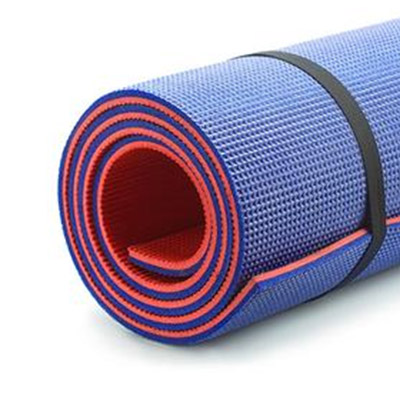
-
 Afrikaans
Afrikaans -
 Arabic
Arabic -
 Belarusian
Belarusian -
 Bengali
Bengali -
 Bulgarian
Bulgarian -
 Croatian
Croatian -
 Czech
Czech -
 Danish
Danish -
 Dutch
Dutch -
 English
English -
 Finnish
Finnish -
 French
French -
 German
German -
 Greek
Greek -
 hawaiian
hawaiian -
 Hebrew
Hebrew -
 Hindi
Hindi -
 Hungarian
Hungarian -
 Indonesian
Indonesian -
 irish
irish -
 Italian
Italian -
 Japanese
Japanese -
 Javanese
Javanese -
 kazakh
kazakh -
 Khmer
Khmer -
 Korean
Korean -
 Kyrgyz
Kyrgyz -
 Lao
Lao -
 Latin
Latin -
 Luxembourgish
Luxembourgish -
 Malay
Malay -
 Myanmar
Myanmar -
 Norwegian
Norwegian -
 Persian
Persian -
 Polish
Polish -
 Portuguese
Portuguese -
 Romanian
Romanian -
 Russian
Russian -
 Serbian
Serbian -
 Slovak
Slovak -
 Somali
Somali -
 Spanish
Spanish -
 Swedish
Swedish -
 Tagalog
Tagalog -
 Thai
Thai -
 Turkish
Turkish -
 Turkmen
Turkmen -
 Ukrainian
Ukrainian -
 Uighur
Uighur -
 Vietnamese
Vietnamese
Οκτ . 15, 2024 04:24 Back to list
Innovative Concepts in Road Bike Design for Performance and Comfort
The Evolution of Road Bike Design
Throughout the years, the design of road bikes has continually evolved, reflecting advancements in technology, materials, and aerodynamic principles. From the early days of cycling to the high-performance machines of today, the road bike has undergone significant transformations that have not only enhanced speed and efficiency but also improved comfort and handling.
Historically, road bike design began in the late 19th century with the advent of the safety bicycle. Early bicycles were heavy and cumbersome, but they laid the groundwork for more refined models. The introduction of lighter materials, such as steel, allowed for more streamlined designs. During the mid-20th century, aluminum frames started to gain popularity, providing a significant weight reduction that appealed to both amateur and professional cyclists.
In the late 20th century, the cycling industry witnessed a revolution with the introduction of carbon fiber. This advanced material not only offered an unparalleled strength-to-weight ratio but also allowed for greater customization in frame shapes. Carbon fiber's versatility enabled engineers to create bike frames that were not only lightweight but optimized for aerodynamics. The use of computational fluid dynamics (CFD) in the design process ensured that every curve and angle was fine-tuned for maximum efficiency.
One pivotal aspect of road bike design is aerodynamics. As cycling speeds increased, the need for bikes that minimized wind resistance became critical. Designers began to focus on creating frames with tapered shapes, integrated components, and deep-section wheels, all aimed at reducing drag. The trend of integrating cables within the frame became popular, allowing for a sleeker appearance while also enhancing aerodynamic performance.
road bike design

Moreover, the geometry of road bike design has evolved significantly, catering to different riding styles and preferences. Traditional road bikes featured a more aggressive geometry, which placed the rider in a forward-leaning position, ideal for racing. However, as endurance cycling became more popular, bike manufacturers recognized the demand for a more relaxed geometry. This shift resulted in designs that prioritized comfort for long-distance rides, with taller head tubes and shorter top tubes to create a more upright position without sacrificing performance.
The incorporation of technology has also reshaped road bike design in recent years. Electronic shifting systems, such as Shimano’s Di2 and SRAM’s eTap, have revolutionized gear shifting, allowing for precise and instantaneous changes with the push of a button. This innovation not only improves performance but also enhances the rider’s experience. Additionally, smart bike technology has emerged, enabling cyclists to track their performance metrics such as speed, distance, and heart rate in real-time.
Sustainability has also become a crucial consideration in road bike design. As environmental awareness grows, manufacturers are exploring eco-friendly materials and practices. This includes the use of recycled materials in bike frames and components, as well as environmentally sustainable production processes. Consumers are increasingly seeking bikes that not only perform well but also align with their values concerning environmental stewardship.
Looking ahead, the future of road bike design promises even more innovations. With advancements in 3D printing, designers may be able to create custom bike frames tailored to individual riders’ specifications at an unprecedented scale. Moreover, the integration of artificial intelligence in the design process could lead to breakthroughs in optimizing performance metrics, resulting in bikes that are not only faster but also safer.
In conclusion, the design of road bikes has come a long way, shaped by technological advancements, changing riding styles, and a growing emphasis on sustainability. As we consider the future of cycling, it is evident that innovation will continue to drive the evolution of road bike design, enhancing the cycling experience for enthusiasts around the globe. Whether for competitive racing or leisurely rides, road bikes will undoubtedly continue to adapt and evolve in the years to come.
-
Premium Titanium Road Bike: Lightweight & Durable
NewsAug.01,2025
-
Red Black BMX Bike with GPT-4-Turbo AI Tech
NewsJul.31,2025
-
New Red Anti-theft E-Bike | Easy Ride City Commuter
NewsJul.31,2025
-
BMX 20 Inch Bikes for Freestyle & Street | Fat Tire Options Available
NewsJul.30,2025
-
322 High Quality 26 Inch 21 Speed Adult Mountain Bike OEM MTB
NewsJul.29,2025
-
Specialized Kids Mountain Bikes - Safe, Durable & Fun Riding Experience
NewsJul.29,2025

